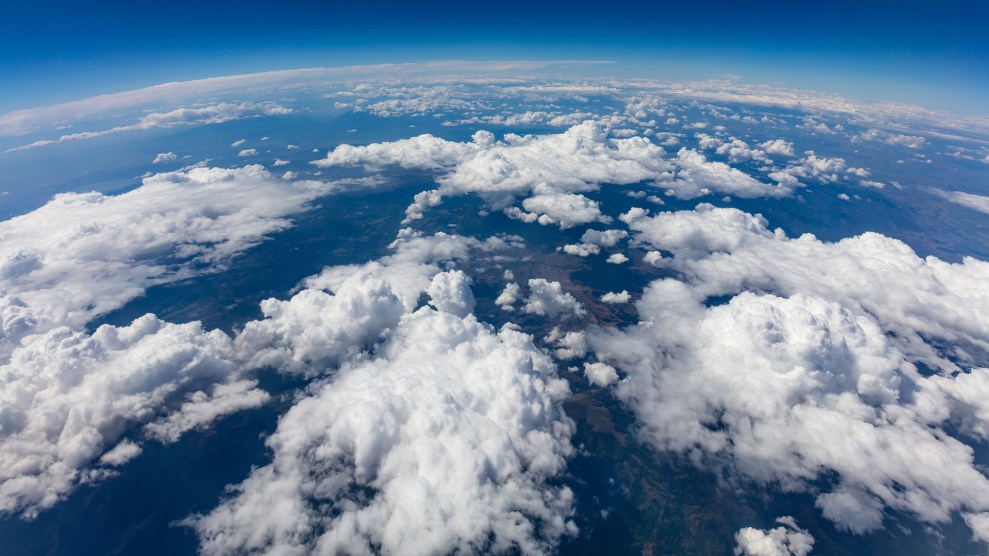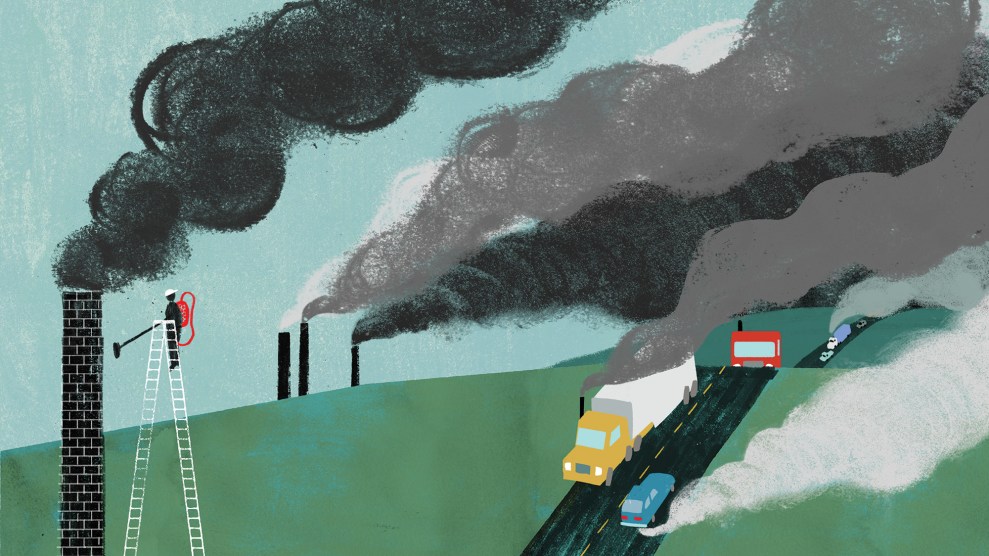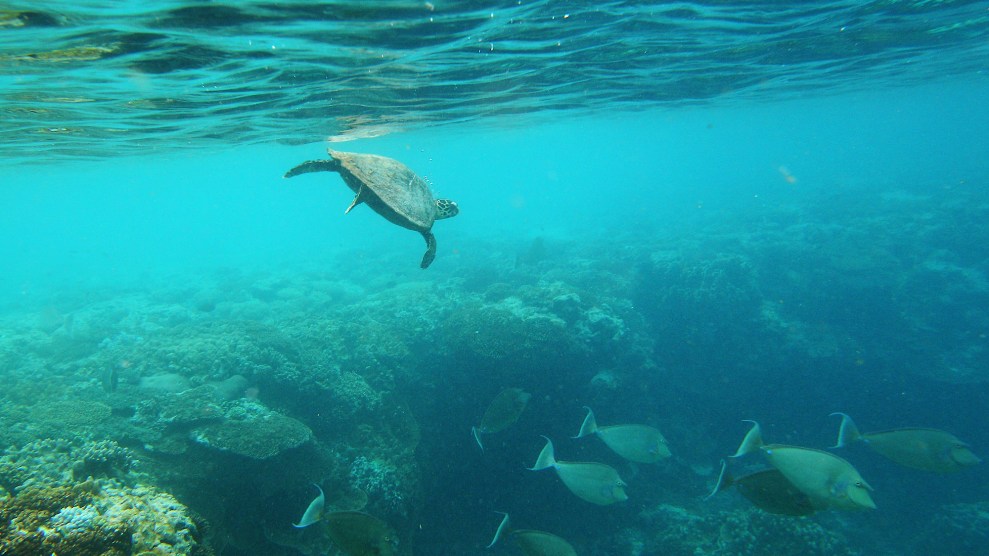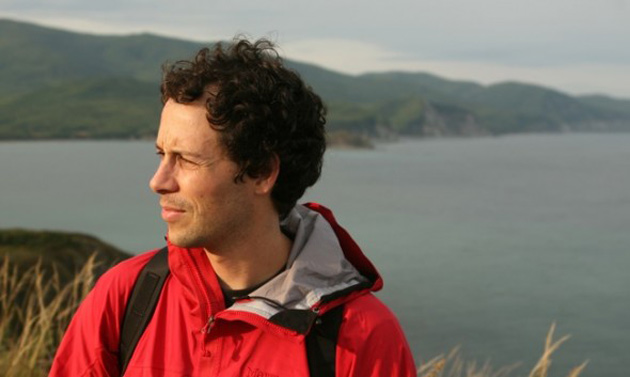
Getty Images
This story was originally published by WIRED and is reproduced here as part of the Climate Desk collaboration.
One way to fight climate change may be to…do more climate change. “Geoengineering” is a broad term encompassing distinct techniques for hacking the climate, split into two main groups: There’s carbon dioxide removal (CDR), which could mean sucking carbon out of the atmosphere with machines, or simply encouraging more vegetation to grow. And there’s solar radiation management (SRM), which might include brightening clouds or spraying aerosols in the atmosphere to bounce the sun’s energy back into space.
These two methods are sort of like different approaches to battling a seasonal flu.
Carbon removal is like taking an antiviral, which helps your immune system banish the virus from your body; deleting carbon from the atmosphere similarly targets the root cause of the climate change problem. On the other hand, solar radiation management is more like taking an aspirin to reduce the fever the flu is causing. It doesn’t obliterate the problem-causing agent, and only treats symptoms.
Each technique comes with huge risks—be they political or planetary, obvious or hidden—that scientists are just beginning to explore. But they’re worth thinking about now, because some scientists are taking geoengineering seriously and urging more studies to consider it as a way to bring down global temperatures while governments tackle decarbonizing the world economy.
Let’s take solar radiation management first, specifically stratospheric aerosol injection, or SAI. The idea is to introduce sulfur dioxide into the stratosphere, which would generate aerosols that would cool the planet by wrapping around it like an energy-reflecting blanket. (Volcanic plumes do the same thing naturally.) At least theoretically, SAI would immediately bring down temperatures, exposing fewer people, animals, and plants (including crops) to heat stress.
You might think you’d need vast squadrons of planes to spray every inch of the sky, but the atmosphere actually does this dispersal itself. The neat thing about the stratosphere is that you can inject it with something—let’s say pink glitter—and it’ll spread all over the world, turning the skies shiny and rosy. If that’s the kind of thing you’re into.
But who would be desperate enough to take this chance? It probably depends on where people live. How badly a region is suffering from climate change—and is projected to suffer in the future—will define its politics regarding geoengineering. As world governments drag their feet on reducing emissions, some nations might grow desperate to try SAI as a stop-gap measure.
“It’s in general called ‘the thermostat problem,’ the problem that countries actually have different preferences over where the hypothetical global thermostat would be set,” says Duke University political scientist Tyler Felgenhauer, who studies the risks of SAI.
Climate risks like supercharged hurricanes, flooding, and sea-level rise have disproportionately affected coastal nations. “There are indications that people, for example, in small island states, which are more threatened by climate change, might be more willing to accept risks from SAI,” says Christine Merk, deputy director of the Research Center Global Commons and Climate Policy at the Kiel Institute, who researches public perceptions of geoengineering. And that might mean they are willing to take risks with consequences that may be borne elsewhere. “What do you weigh higher: the lives of people threatened by climate change, or the lives threatened by SAI?” she asks. “That’s in the end a moral judgment.”
How governments make that judgment will likely have to do with whether citizens and their legislators are convinced there is a climate emergency. “If you’re afraid of the breakdown of the climate system, you might accept this fix,” says Merck.
And, says Janos Pasztor, executive director of the Carnegie Climate Governance Initiative, leaders will have to be convinced that taking drastic but risky action is better than doing nothing. “You cannot look at the risks of [solar radiation management] in isolation—you have to look at the risk of doing versus not doing, and then compare which world is going to be better or worse,” he says.
Altering the climate will affect every nation on Earth. We all share one atmosphere. So who gets to make such a momentous decision? “One has to include the key different stakeholders that will be impacted in different ways. It is very easy to say this—it’s extremely difficult to do it,” Pasztor says. “But that’s what we need to do. And so the international community needs to start serious conversations about how one actually does that.”
Yet it’s hard to imagine (ideally) getting buy-in from all the nations of the world, much less the competing political and cultural factions within those nations. The United Nations tried in 2019 with a resolution calling for more research of geoengineering, but the United States, Saudi Arabia, and Brazil blocked it. Even within a single country, this idea can be contentious. For example, last year Sweden rejected a small-scale test of stratospheric aerosols. It is, perhaps alarmingly, easier to imagine a rogue state from going it alone, or an eccentric billionaire taking it upon themselves.
And if getting political consensus before deployment might be difficult, imagine what would happen afterward if things go wrong. Consider a scenario in which the world somehow agrees on an SAI program, and cooperates on rolling it out. All seems to be going smoothly, until a hurricane or drought strikes a particular country, whose political leadership blames it on geoengineering. “The problem is that as you ramp up a program, there might be some climate catastrophe somewhere in the world that people may blame on solar geoengineering, when in fact it’s actually just climate change,” says Felgenhauer. “Those first few years, it might be hard to distinguish between: Well, was that event climate change, or was that due to the solar geoengineering gone poorly?”
While solar geoengineering research is still preliminary, already there are hints that it might lead to some particularly strange and unexpected side effects. A paper published in April in the journal Nature Communications concluded that the global cooling caused by SAI might actually expose more people to malaria. (Hotter conditions make it harder for mosquitoes to survive and transmit the malaria parasite to humans.)
“Most of the focus has been on: Would it work? Do we have the technology to do it? Do we think we could actually bring down temperatures worldwide?” says Georgetown University global change biologist Colin Carlson, lead author of the study. “There’s been a lot less focus on the kind of questions that we’re asking in this study, which is: OK, well, how would this affect people?”
Malaria transmission won’t go up or down uniformly across the planet as temperatures rise, according to the researchers’ modeling. They found that cooling caused by geoengineering would put millions of additional people in West Africa at risk of contracting malaria, but in East Africa, it would actually shorten the transmission season, putting fewer people at risk. “All of these kinds of generalizations and rules of thumb that we use, all that sort of mental math that’s like, ‘OK, geoengineering will probably save lives’—that may not work at a global scale, and it definitely doesn’t work for a lot of countries,” says Carlson. “What people want to do with the health impacts of this is to say, ‘Well, it probably won’t be that bad.’ I’m not sure the data is going to come out saying that.”
In a separate study, Carlson posited a different X-factor: The possibility that geoengineering might reduce monsoon rainfall in South Asia. That would make less water available for crops and people. Monsoons also dilute the concentration of the bacteria that causes cholera, which is found in drinking water—if the storms are weaker, more people might get sick.
Let’s imagine that something goes wrong enough that world leaders pull the plug on their geoengineering program, or there’s a global recession or a world war, and it becomes impossible to fly the planes. The spraying suddenly stops. What happens next?
Any climate problems that had been suppressed would resurge, because, like an aspirin, SRM only brings down the fever—it doesn’t eliminate the underlying malady. One 2018 modeling study found that the aerosols would persist in the atmosphere for a year or two after abruptly stopping their distribution. After that, surface temperatures would rise almost a degree Celsius each decade. (For reference, the Paris Climate agreement is designed to limit global warming to no more than 1.5 degrees Celsius of warming since the dawn of the Industrial Age.)
Plant and animal species have adapted to less severe temperature swings throughout Earth’s history, but nothing like this. The rapid heat rise would kill people and crops, and damage oceans. Particularly sensitive species, like amphibians, wouldn’t stand a chance. “Obviously, if you had a strong SRM program ongoing and then it suddenly stopped,” says Felgenhauer, “that would be catastrophic environmentally.”
Surely carbon removal would be a less controversial method of geoengineering, right? It seems inherently less risky to filter carbon out of the atmosphere with machines or, even better, restore forests to sequester carbon the natural way. But as it turns out, there are plenty of ways this, too, can go wrong.
The right way to use trees to capture carbon is to encourage the regrowth of whole ecosystems, which simultaneously addresses the biodiversity crisis. The wrong way is to grow a monoculture of trees of a single species, which is the approach often used by carbon credit programs. These programs have some allure: They raise money from corporations, which can then boast to the public how much carbon they’re capturing. But tree farms are nowhere near as efficient at capturing carbon as an intact forest, and they don’t save other species in the process. “A lot of the time, it’s assumed that these kinds of biology-based carbon-removal techniques will automatically create co-benefits, and that’s not true at all,” says Cardiff University social psychologist Emily Cox, who studies public attitudes toward carbon removal. “They have the potential for co-benefits, but the co-benefits need to be very, very carefully managed.”
And exactly how much carbon they remove can vary quite a bit based on variables like the health of the vegetation. “One of the major risks of some of these biology-based proposals is that an assumption gets made that you can easily equate X number of trees to X million tons of carbon without actually looking at what kinds of trees they are, and where they’re being planted,” says Cox. The amount of captured carbon might end up being negligible. “You have a lot of trees, which is brilliant. You haven’t necessarily got the climate benefits.”
Another technique known as bioenergy with carbon capture and storage, or BECCS, also relies on a monocrop, usually fast-growing grasses. In this case, the vegetation is burned to produce energy, and the resulting emissions are sequestered underground. But it also comes with its own set of dubious side effects—it would require vast tracts of crops, and huge amounts of water, to make a dent in atmospheric carbon concentrations: A paper that published last month found that in the US alone, scaling up BECCS would expose 130 million Americans to water stress by 2100.
But in a global climate gone bonkers, there are even risks to restoring forests to their former glory, because that glory is increasingly perilous. Supercharged wildfires are now obliterating forests, instead of gently resetting ecosystems to make way for new growth. If you spend a lot of time and money restoring one of these forests to sequester carbon, and then it burns, all of that carbon goes right back into the atmosphere. Or if a given country’s political regime changes, and goes from supporting reforestation to deforestation, you’d have the same problem. Just look at what’s happening in the Amazon.
“I would argue that many proposals for land-based removals could be risky,” says Cox. “Because you’ve got a very, very high risk that either the carbon removal doesn’t happen in the first place, or that it happens, but then in 10 years’ time is reversed.”
Researchers have developed a way to mimic natural carbon sequestration with a technique called direct air capture, or DAC. These machines suck in air, pass it over membranes to remove the carbon dioxide, and pump it underground, locking it away forever. The tide may be shifting towards DAC in the US. Last month, the Biden administration threw in $3.5 billion to back direct air capture. (That comes five years after a California congressman introduced a bill that would fund the research of geoengineering, but it never went anywhere.)
But this, too, faces two big issues. The first is that DAC exists at nowhere near the scale needed to make a dent in excess atmospheric carbon. One plant that came online in Iceland last year is only capturing the equivalent emissions of 870 cars. A 2021 study calculated that it would take an investment of 1 to 2 percent of global gross domestic product to capture 2.3 gigatons of CO2 a year by 2050—and that’s only a fraction of current annual emissions, which are around 40 gigatons.
“There is the risk that we cannot scale and deploy fast enough,” says Benjamin Sovacool, who studies the risks of geoengineering at Aarhus University in Denmark. “It’s looking like the rate at which we’d have to deploy these is unlike any previous energy transition we’ve had, because the scale is so immense.”
The second issue is one of “moral hazard,” or the temptation to lean on DAC as a crutch, instead of doing what’s necessary: dramatically slashing greenhouse gas emissions. If a nation’s leaders anticipate being able to remove emissions via DAC, they don’t need to worry about cutting those emissions in the first place. It’s like waiting for a miracle antiviral—except the requisite dose doesn’t yet exist.
There’s a chance that the extreme and desperate nature of geoengineering might do the opposite—instead of encouraging complacency or a reliance on last-minute technology fixes, it may alarm the public enough that they’ll start to treat climate change like an emergency. But, says Sovacool, “politicians might be even more susceptible to the moral hazard, because they’re only thinking in the present terms. They’ll gladly push as much to future generations as they can.”















